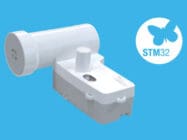
The progress and prospects of the energy metaverse, flexible solar panels coming to market and an edible rechargeable battery concept are in the week’s technology radar.
Energy metaverse – the building blocks securely in place
The metaverse may seem very conceptual to many at this stage but it is coming in the energy sector – and coming big, according to a new report from Guidehouse Insights, which estimates that over the next decade global investment in core technologies will grow from just over $6 billion in 2022 to nearly $80 billion in 2031 – a compound annual growth rate of no less than 33%.
Core energy metaverse technologies include digital twins, AI and machine learning, unmanned aerial systems and drones, extended reality and blockchain-based applications.
“When the energy metaverse is fully realised – admittedly more than a decade away – utilities and O&G concerns can envision a day when employee onboarding and training take place via XR in a metaverse-based training centre,” says Richelle Elberg, principal research analyst with Guidehouse Insights.
Have you read?
Accurate location data: Futureproofing energy networks in the transition to net zero
Site visit: How thorium energy can change the future of nuclear power
“Much like it was difficult in the early 1990s to imagine all the ways a smartphone or the internet would change how business is conducted, in 2023 it can be hard to see just how radically metaverse technology stands to change the operating dynamics of energy industry verticals.”
Potential examples cited by Guidehouse include utility storefronts in metaverse malls that could provide virtual customers with real-world benefits such as product comparisons and purchasing, energy use analysis and evaluation of a premises’ suitability for solar.
In-demand specialised experts in a field could work on a virtual offshore rig, advising onsite workers how to address a problem. And drones could conduct ongoing inspections of critical assets, feeding real-time data into digital twins equipped with advanced AI to predict and prevent wildfires or methane emissions.
Flexible solar panels coming to market
Solar panels only a few millimetres thick that are claimed integrable on all kinds of surfaces are about to become available from the Belgian startup EnFoil (derived from ‘Energy enabling foil’).
The panels, which are based on copper-indium-gallium-selenium technology, are the outcome of years of research by the Hasselt University and microelectronics research organisation imec within the Energyville collaboration, with EnFoil a spin-off from the two organisations.
Potential applications range from buildings to tents and swimming pool covers, with what is said a pliable but robust format manufacturable in all shapes and sizes and offering greater flexibility than the current mostly flat and predetermined size formats.
“As a result, the technology was mainly limited to exclusive construction projects or as an expensive extra option for the roof of your car. With Enfoil, we are changing this,” says Marc Meuris, CTO.
He adds that talks with industry to bring EnFoil’s solar films to market are “in full swing”, with the current focus mainly on the logistics sector, where the proposal is to integrate the materials on the roofs and sidewalls of trucks to power their sensors and track and trace systems.
An edible rechargeable battery
Children’s toys, gastrointestinal tract disease diagnosis and treatment and food quality monitoring are considered some potential areas where edible electronics would be of interest.
As a step towards this researchers at the Italian Institute of Technology have created a first totally edible and rechargeable battery.
With inspiration from the biochemical redox reactions that happen in the body and materials consumed as part of the daily diet, the battery utilises riboflavin or vitamin B2 as anode and the plant pigment quercetin as cathode, along with activated charcoal to increase the electrical conductivity and a water-based electrolyte.
The separator was made from nori seaweed, the kind found in sushi.
Then, electrodes were encapsulated in beeswax from which two food-grade gold contacts – the foil used by pastry chefs – on a cellulose derived support come out.
The battery cell operates at 0.65V, a voltage low enough not to create problems in the human body when ingested, and can provide current of 48μA for 12 minutes or a few microamps for more than an hour – enough to supply power to small electronic devices, such as low power LEDs, for a limited time.
Ivan Ilic, who co-authored the study, said the edible battery is also very interesting for the energy storage community.
“Building safer batteries, without usage of toxic materials, is a challenge we face as battery demand soars. While our edible batteries won’t power electric cars, they are a proof that batteries can be made from safer materials than current Li-ion batteries. We believe they will inspire other scientists to build safer batteries for a truly sustainable future.”








